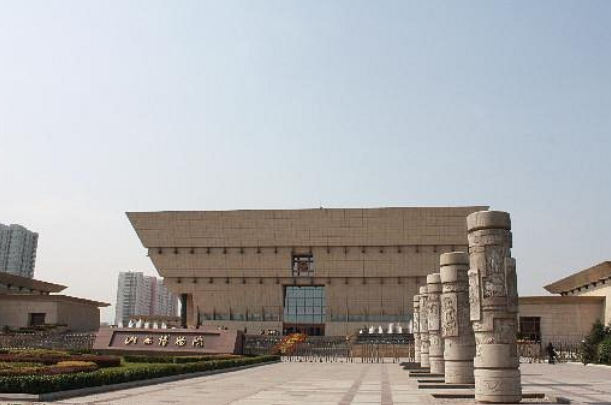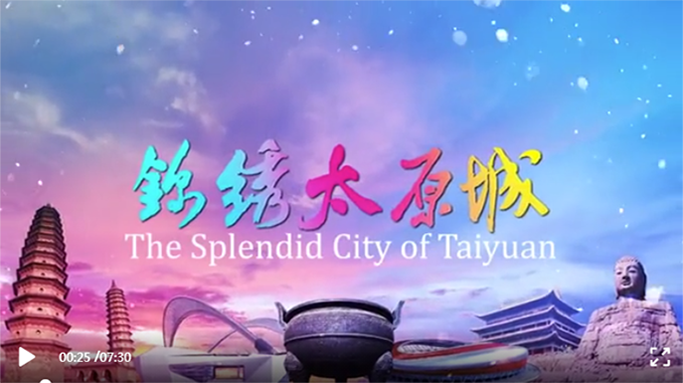Shanxi Province
(Click on the picture to watch the video)
(Click on the picture to watch the video)
Province, with a history of more than 3,000 years, draws on cultural heritage and natural resources for high-quality growth
Located at the Bohai Bay-rim economic circle, Shanxi province has huge development potential, abundant natural resources, diverse cultures and convenient transportation. Taiyuan, its capital, is some 500 kilometers from Beijing and Tianjin Port. The 156,700-square-kilometer land is home to 37 million people.
Shanxi is a cradle of Chinese civilization, with a written history of more than 3,000 years. The early Chinese emperors Yao, Shun and Yu all established capitals in the southwestern part of Shanxi, which opened the first chapter of Chinese civilization. The province boasts magnificent natural scenery and landscapes with three World Cultural Heritage sites, including Wutai Mountains, one of the four famous Buddhist mountains in China, Pingyao ancient city and the Yungang Grottoes.
Shanxi has 531 national cultural relics, ranking first in the country. There are 120 wooden buildings dating back to before the three co-existing Song (960-1279), Liao (916-1125) and Jin (1115-1234) dynasties, which account for more than 70 percent of the country’s total. It is known as the “Museum of Ancient Architectural Art in China”. The province has been home to many talented people dating back to thousands years ago, such as the ancient Chinese thinker Xun Zi (Hsun Tsu 313-218 BC) during the Warring States Period, poets of the Tang Dynasty (618-907) including Wang Bo, Wang Wei and Wang Zhizhen, and Northern Song Dynasty (960-1127) statesman Sima Guang.
Some of China’s world-class cultural symbols are deeply rooted in Shanxi. One example is the Great Wall, which was the most complete defense system for the Chinese military in ancient times. Another is the Yellow River, the mother river of the Chinese nation, which surrounds southwest Shanxi and forms the wonderful Hukou Waterfall in Jixian county. Taihang Mountains is another magnificent natural wonder and landmark in Shanxi. The province has a mild climate with distinct seasons, forests, wetlands, hot springs, and other recreational resources.
The area is rich in natural resources with more than 120 types of minerals. There are more than 270 billion metric tons of coal reserves and its volume of coalbed methane, vanadium and magnesium ore rank first in China.
Shanxi is a paradise for food, especially its noodles and grain. The province has more than 400 kinds of noodles and produces more than 120 types of miscellaneous cereals in seven categories.
The province is also a major production base for traditional Chinese medicines. There are 1,788 kinds of TCM materials and 39 kinds of authentic medicinal materials in Shanxi. It is also home to the time-honored alcohol brand Fenjiu, one of the eight famous spirits in China.
Shanxi has rich and diverse folk cultures such as Jinju Opera, the art of Chinese paper-cuttings and woodcut prints. Enamelware, polished lacquer and clear mud are three cultural treasures in Shanxi.
Thriving Shanxi
We are committed to building a vibrant Shanxi. Entering the new era, Shanxi is aiming to boost high-quality growth, maintain steady and healthy development and build a well-off society.
Shanxi will seize development opportunities under the nation’s key policies such as environmental protection and high-quality development of the Yellow River basin.
The province will construct a comprehensive pilot zone to transform its resource-based economy, carry out energy revolution reforms, create a first-class innovation ecosystem and focus on the advancement of high-end emerging industries, such as manufacturing, next-generation information technology, big data, new energy, new materials, energy conservation, environmental protection, general aviation and biomedicine.
Shanxi is also committed to developing other industries such as cultural tourism and intensive processing of agricultural products. It will also accelerate the sustainable development of traditional industries such as coal, coke, iron and steel.
The province is striving to reform and innovate its development zones, establishing 77 such zones at the provincial level and above.
The area of industrial development zones in Shanxi has reached 2,800 square kilometers, accounting for some 1.8 percent of the province’s land. The development zones are becoming a main engine for innovation and opening-up in Shanxi.
Open Shanxi
We are committed to building an open Shanxi. Shanxi has a business tradition since ancient times and its people have always had an open mindset. In the new era of opening-up to the outside world, Shanxi has tried hard to expand its business circle under the Belt and Road Initiative, boost national strategies such as the synergetic development of the Beijing-Tianjin-Hebei region, the integration of the Yangtze River Delta and the Guangdong-Hong Kong-Macao Greater Bay Area.
Shanxi will build open platforms such as ports, comprehensive bonded areas and inland ports to further promote opening-up.
Taiyuan is its transport hub along the high-speed railway system, with the China-Europe Central Asia scheduled train services offered. The number of international routes has been on the rise and the throughput of Taiyuan Wusu International Airport has exceeded 14 million passengers annually.
Shanxi is aiming to create a business-friendly environment for investors by speeding up the construction of a digital government, strengthening intellectual property protection, deepening customs clearance reform and providing a “single window” service for international trade.
It has established trade relations with more than 180 countries and regions around the world, together with 58 friendship cities and 105 friendly partners.
Beautiful Shanxi
We are committed to building a beautiful Shanxi. To date, Shanxi has made remarkable progress in preserving its ecological rehabilitation of Taihang Mountains, Lyuliang Mountain, the major reaches of the Fenhe and Sanggan rivers, and the Yellow River basin in the fight against climate change.
The forest coverage rate of Shanxi has increased by 0.5 percentage points each year. Meanwhile, significant results have been achieved in energy conservation and emission reduction. The Fenhe River, the mother river in Shanxi, now has better water quality and beautiful scenery. Thousands of white swans come to Shanxi each winter.
Shanxi tourist attraction

Wutai Shan
Wutai Mountain in Shanxi Province is located in northeast China from the provincial capital Taiyuan 230 km. Sichuan Emei Mountain, Jiuhua Mountain, Putuo Mountain in Zhejiang were called “the four famous mountains of Chinese Buddhism.” Buddhism and the Chinese tourist destination, famous summer out China’s top ten first. In 2009 the cultural landscape UNESCO World Heritage List.
Address:Taihuai Town, Wutai County, Xinzhou City, Shanxi Province

Mengshan Mountain Buddha
Mengshan Grand Buddha has a long history which can dates back to the North Qi Dynasty. In AD 551, the king of the North Qi Dynasty, Gao Yang ordered people to chisel a Buddha in the rocks, and its construction lasted for 24 years. According to North Qi Book, when the Grand Buddha was being built, its construction site was extremely wonderful. Therefore, when the king of Tang Dynasty, Li Zhi and the queen, Wu Zetian worshiped this Grand Buddha, they all highly appreciated it.
Address:Mengshan, Jinyuan district, Taiyuan city, Shanxi province

Shanxi Museum
Shanxi Museum has an exhibition area of 13000 square meters and a cultural relic reservoir area of 12000 square meters. It has a total collection of more than 500000 pieces, which are characterized by bronze, porcelain, stone carvings, Buddhist statues, murals, calligraphy and painting. Among them, there are 40282 precious cultural relics (groups), including 2129 first-class cultural relics (groups), and more than 110000 ancient books. Five art topics, including civil works, mountains and rivers, calligraphy, Danqing, Fangyuan world, and porcelain garden.
Address:No.13, north section of Binhe West Road, Taiyuan City, Shanxi Province



